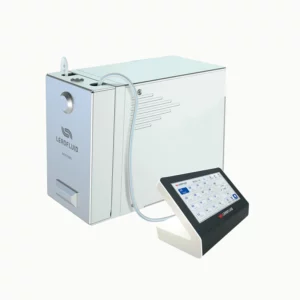Preventing leakage in micro dosing pump systems is crucial to ensure accurate dosing, maintain system integrity, and prevent environmental contamination.
Here are some key steps to prevent leakage:
- Selecting High-Quality Components: Choose high-quality micro dosing pumps, valves, fittings, and tubing that are designed for compatibility with the fluid being pumped and the operating conditions of the system. Inferior or mismatched components are more prone to leakage.
- Proper Installation: Ensure that all components of the micro dosing pump system are installed correctly and securely according to the manufacturer’s specifications. Follow recommended assembly procedures, including proper tightening of fittings and connections.
- Regular Inspection: Conduct routine inspections of the entire micro dosing pump system to check for signs of wear, damage, or deterioration. Inspect fittings, seals, tubing, and connections for any indications of leaks, corrosion, or degradation.
- Tightening Connections: Periodically check and tighten fittings, connections, and fasteners to ensure they are properly sealed. Be cautious not to overtighten, as this can damage components or cause distortion that leads to leakage.
- Using Suitable Sealing Materials: Use appropriate sealing materials such as gaskets, O-rings, seals, and thread sealants to ensure leak-tight connections. Select sealing materials that are compatible with the fluid being pumped and resistant to degradation.
- Proper Tubing Selection: Choose tubing materials that are compatible with the fluid being pumped and resistant to chemical degradation, abrasion, and permeation. Ensure that tubing is the correct size and thickness to withstand the pressure and flow rate of the system.
- Maintaining Proper Pressure: Operate the micro dosing pump system within the recommended pressure range to prevent overloading and stressing of components, which can lead to leaks. Monitor pressure gauges and adjust settings as needed to maintain optimal operating conditions.
- Monitoring and Control: Implement monitoring and control systems to detect leaks and abnormal conditions in real-time. Utilize sensors, alarms, and automated shut-off valves to respond promptly to leaks and prevent further damage or environmental impact.
- Regular Maintenance: Perform regular maintenance tasks such as lubrication, cleaning, and component replacement to keep the micro dosing pump system in optimal condition. Replace worn or damaged seals, gaskets, and tubing to prevent leaks.
- Training and Education: Ensure that personnel responsible for operating, maintaining, and servicing the micro dosing pump system are properly trained and educated on best practices for leak prevention, detection, and response.
- Environmental Protection: Implement containment measures such as drip trays, secondary containment systems, and leak detection devices to minimize the impact of potential leaks on the environment and personnel safety.
By following these preventive measures, you can minimize the risk of leakage in micro dosing pump systems, ensuring reliable and efficient operation while maintaining safety and environmental compliance. Regular monitoring, maintenance, and attention to detail are essential for preventing leaks and maintaining system integrity over time.
